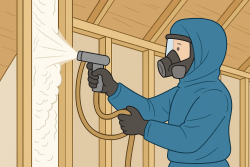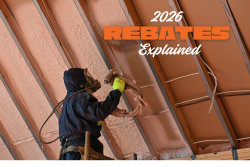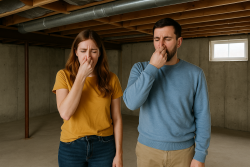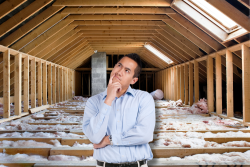Ensuring your home is well-insulated is crucial in order to maintain a comfortable living environment and manage energy costs. Many homeowners need help deciding whether it's safe to install new insulation over old insulation. This concern is particularly relevant when considering Spray Foam Insulation in Waterloo, a popular choice for its superior insulating properties. There are a number of factors to consider when updating your home's insulation, especially if you're considering adding new layers over existing ones.
Understanding Your Current Insulation
Before proceeding with an insulation upgrade, knowing your home's insulation type is essential. Many older homes, especially those built in the early 1900s, were insulated with vermiculite, which may contain asbestos. Testing these more senior insulation types before proceeding with any installation work is crucial.
Assessing the Condition of Existing Insulation
The physical state of your current insulation significantly influences your decision to add new layers. Deteriorated, infested, or damp insulation should not be overlaid with new materials. Here are some specific conditions to look for:
Rodent Infestation
Rodents are attracted to the warmth of insulation materials, making them a common site for nests. This not only degrades the insulation but also poses health risks. If you notice signs like droppings, gnaw marks, or nests, it's advisable to consult a professional. Removing the infested insulation before installing new materials is the best action.
Moisture Problems
Wet insulation is a breeding ground for mould and mildew and can lead to structural damage. Moist insulation loses its effectiveness, rendering any additional layers ineffective. If you discover wet insulation, identify and fix the source of moisture before replacing it with new, dry insulation.
When to Avoid Adding New Insulation Over Old
If your insulation is damaged or underperforming, there are better solutions than adding new layers on top isn't. Instead, it's more effective to remove the old insulation and replace it entirely. This approach optimizes the new insulation, providing maximum energy efficiency and comfort.
Other factors, such as air leaks and ventilation issues, can affect your insulation's performance. Address these problems first before considering additional insulation. This holistic approach to home insulation ensures that all aspects of your home's thermal envelope are functioning efficiently.
The Role of Professional Insulation Contractors
When considering an insulation upgrade, particularly Spray Foam Insulation in Waterloo, consulting with professional insulation contractors like Reitzel Insulation is invaluable. They can assess your attic space, provide expert recommendations, and ensure the new insulation is installed correctly.
Professional contractors can also help identify and rectify any pre-existing issues, such as air leaks or insufficient ventilation, ensuring your new insulation performs at its best. This is crucial in maintaining a comfortable, energy-efficient home.
Conclusion
Upgrading your home's insulation, especially with high-quality options like spray foam, is a wise investment in your property's comfort and energy efficiency. By carefully assessing your current insulation, you can ensure that the new insulation provides the maximum benefit. For homeowners in Waterloo, opting for Spray Foam Insulation in Waterloo offers a reliable and effective solution for creating a more comfortable and energy-efficient home.
If you're considering adding new insulation to your home, contact us today for a free onsite estimate. Our experts at Reitzel Insulation are ready to help you make the best choices for your home insulation needs.

















